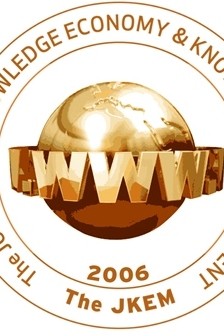FOOD SCIENCE AND TECHNOLOGY ACROSS EUROPE 15. SCIENTIFIC KNOWLEDGE BASE AND DIFFERENCES IN QUALITY
___
- Alene, A. D. and Coulibaly, O., 2009. The impact of agricultural research on productivity and poverty in subSaharan
- Africa. Food Policy 34, 198–209.
- Alfranca, O., Rama, R. and von Tunzelmann, N., 2004. Combining different brands of in-house knowledge:
- technological capabilities in food, biotechnology, chemicals and drugs in agri-food multinationals.
- Science and Public Policy 31, 227–244.
- Alston, J. M., Norton, G. W. and Pardey, P. G., 1995. Science under Scarcity: Principles and Practice for
- Agricultural Evaluation and Priority Setting. Cornell University Press, New York.
- Alston, J. M., 2002. Spillovers. The Australian Journal of Agricultural and Resource Economics 46, 315–346.
- Arias-Aranda, D. and Romerosa-Martínez, M. M., 2010. Innovation in the functional foods industry in a
- peripheral region of the European Union: Andalusia (Spain). Food Policy 35, 240–246.
- Audretsch, D. and Feldman, M. P., 1996. R&D spillovers and the geography of innovation and production.
- American Economic Review 86, 630–640.
- Avermaete, T. and Viaene, J., 2002. On Innovation and Meeting Regulation—the Case of the Belgian Food
- Industry. DRUID Summer Conference on Industrial Dynamics of the New and Old Economy-Who is
- Embracing Whom?, Copenhagen, 6–8 June.
- Byerlee, D., 2000. Targeting poverty alleviation in priority setting for agricultural research. Food Policy 25,
- –445.
- Carew, R., 2005. Science policy and agricultural biotechnology in Canada. Review of Agricultural Economics
- , 300–316.
- Fryer, P. and Versteeg, J., 2008. Processing technology innovation in the food industry. Innovation:
- Management, Policy & Practice 10, 74–90.
- Griliches, Z., 1990. Patent statistics as economic indicators: a survey. Journal of Economic Literature 28, 1661–
- Hertzfeld, H.R., A.N. Link and N.S. Vonortas (2006) Intellectual property protection mechanisms in research
- partnerships. Research Policy 35, 825-38.
- Hoffmann, S., 2010. Food Safety Policy and Economics: A Review of the Literature. Resources for the Future,
- Discussion Paper, Washington, DC. www.rff.org.
- Hosseini, S. M. and Rezaei, R., 2009. Factors affecting the perceptions of Iranian agricultural researchers
- towards nanotechnology. Public Understanding of Science 1, 1–12.
- Huffman, W. E. and Just, R. E., 1999. Agricultural research: benefits and beneficiaries of alternative funding
- mechanisms. Review of Agricultural Economics 21, 2–18.
- Kalpana Sastry, R., Rashmi, H. B., Rao, N. H. and Ilyas, S. M., 2009. Integrating nanotechnology into agri-food
- systems research in India: A conceptual framework. Technological Forecasting & Social Change,
- doi:10.1016/j.techfore.2009.11.008.
- Kinsey, J. D., 2001. The new food economy: Consumers, farms, pharms, and science. American Journal of
- Agricultural Economics 83, 1113–1130.
- Klerkx, L. and Leeuwis, C., 2008. Matching demand and supply in the agricultural knowledge infrastructure:
- Experiences with innovation intermediaries. Food Policy 33, 260–276.
- Muscio, A., Nardone, G. and Dottore, A., 2010. Understanding demand for innovation in the food industry.
- Measuring Business Excellence 14, 35–48.
- Pingali, P. L. and Traxler, G., 2002. Changing locus of agricultural research: Will the poor benefit from
- biotechnology and privatization trends? Food Policy 27, 223–238.
- Sarkar, S. and Costa, A. I. A., 2008. Dynamics of open innovation in the food industry. Trends in Food Science
- & Technology 19, 574–580.
- Schmoch, U., 1993. Tracing the knowledge transfer from science to technology as reflected in patent indicators.
- Scientometrics 26, 193–211.
- Smale, M., 2007. Assessing the impact of technical innovations in African agriculture. Research Report of the
- International Food Policy Research Institute, 3–11.
- Traill, W. B. and Meulenberg, M., 2002. Innovation in the food industry. Agribusiness 18, 1–21.
- Wijnands, J., B. van der Meulen and K. Poppe (2007) Competitiveness of the European Food Industry. Office
- for Official Publications of the European Community, Luxemburg.
- Wilkinson, J., 1998. The R&D priorities of leading food firms and long t
- Yayın Aralığı: Yılda 2 Sayı
- Başlangıç: 2006
- Yayıncı: İbrahim Güran YUMUŞAK
ÜNİVERSİTE ÖĞRENCİLERİNİN İŞKUR HİZMETLERİNE İLİŞKİN ALGI ve TUTUMLARI
Seda YILDIRIM, Ali ACARAY, Neslihan ŞEVİK
MALİ TABLOLAR ANALİZİ: PENDİK BELEDİYESİ ÖRNEĞİ
KAMU YÖNETİMİ VE ÇALIŞMA HAYATINDA ESNEKLİK
TÜRKİYE’NİN BÖLGELERİ ARASINDA SAYISAL UÇURUM
Serkan TOSO, Şevki Mert ATLI, Sona MARDİKYAN
İÇ DENETİM VE BİLGİ GÜVENLİĞİ İLİŞKİSİ: BÖLGESEL BİR ARAŞTIRMA
Niyazi KURNAZ, Akif Kemal DİNDAROĞLU
CRITERIA OF GLOBAL TALENT COMPETITIVENESS: CASES OF TURKEY & LITHUANIA
Ömer GİDER, Saffet OCAK, Mehmet TOP
FOOD SCIENCE AND TECHNOLOGY ACROSS EUROPE 15. SCIENTIFIC KNOWLEDGE BASE AND DIFFERENCES IN QUALITY
Manuel ACOSTA, Daniel CORONADO, Esther FERRANDIZ, Dolores LEON, Pedro MORENO
BİLGİ TEKNOLOJİLERİ VE ULUSLARARASI İLİŞKİLERDE FIRSAT-TEHDİT PARADOKSU
